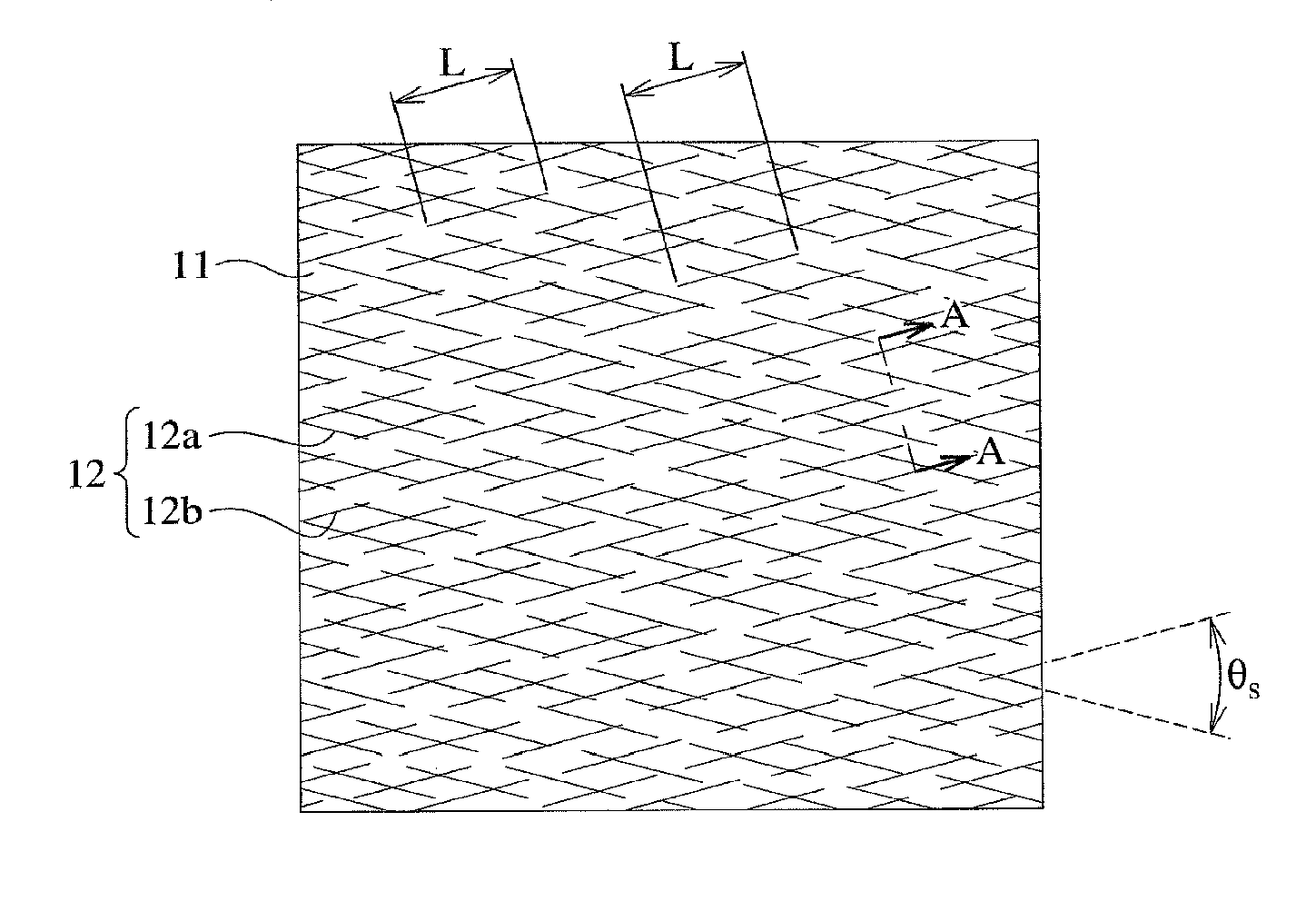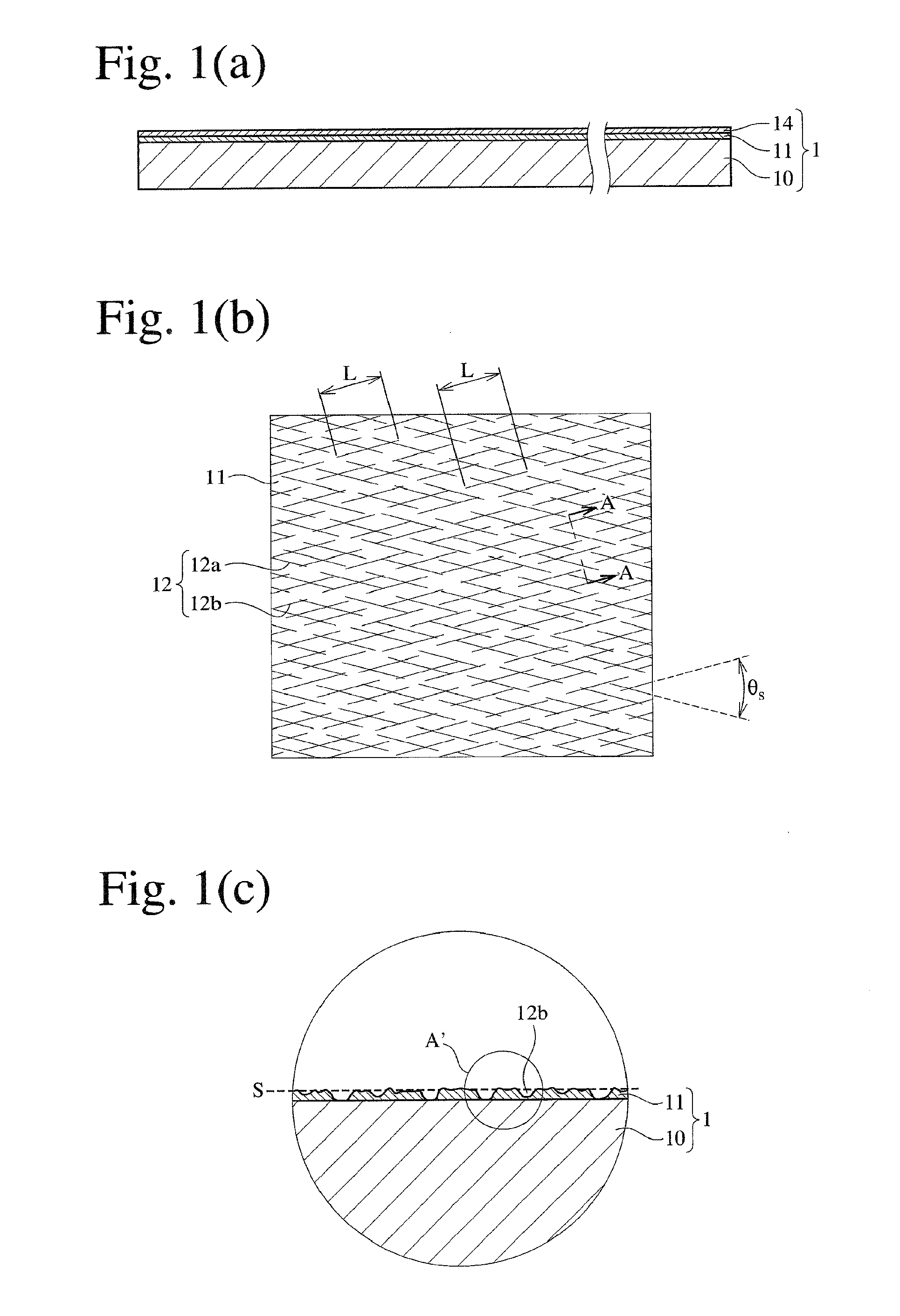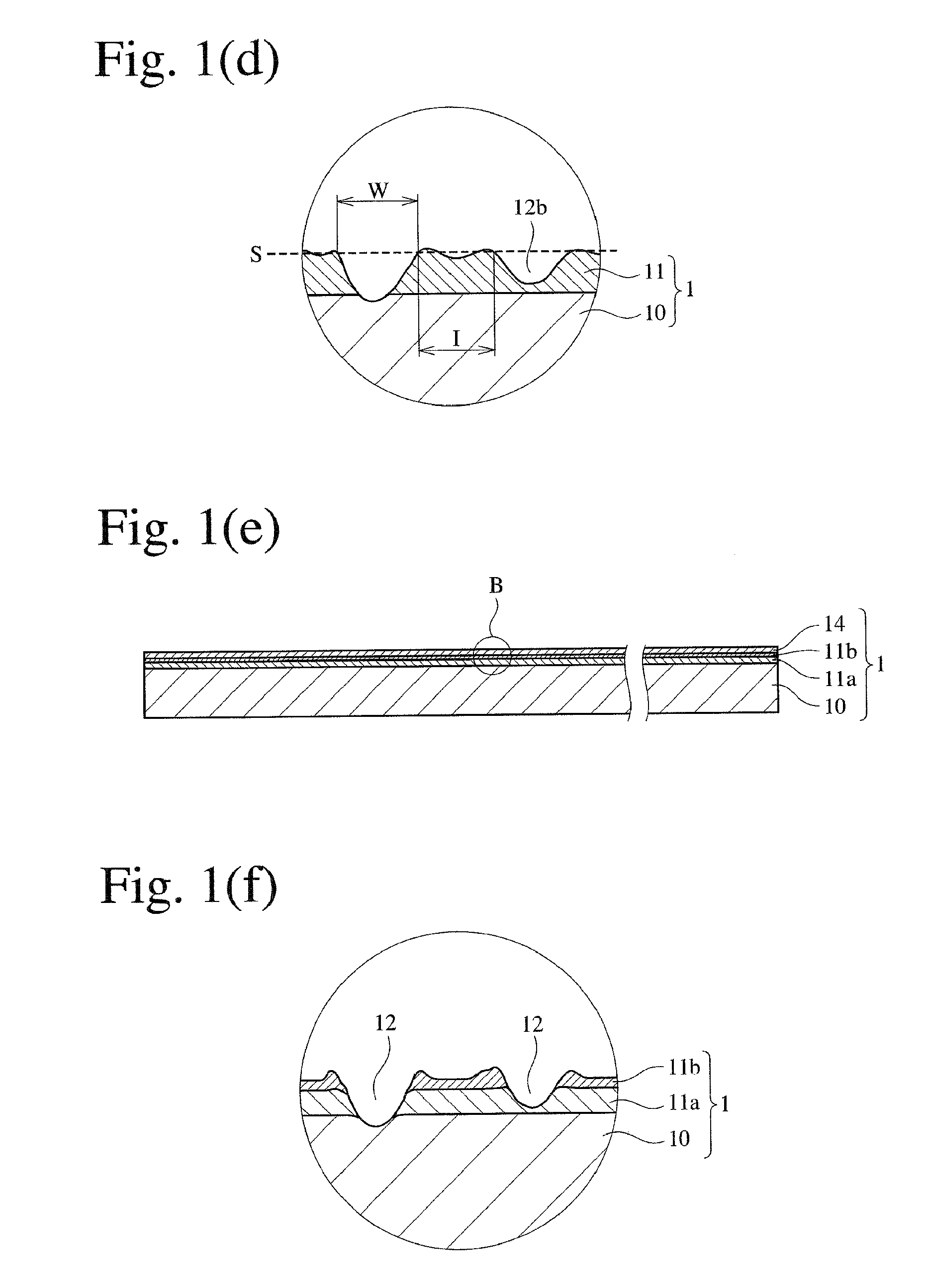Electromagnetic-wave-absorbing film having high thermal dissipation
- Summary
- Abstract
- Description
- Claims
- Application Information
AI Technical Summary
Benefits of technology
Problems solved by technology
Method used
Image
Examples
example 1
[0133]Using an apparatus having the structure shown in FIG. 9 comprising pattern rolls 32a, 32b having electroplated fine diamond particles having a particle size distribution of 50-80 μm, linear scratches were formed in two perpendicular directions as shown in FIG. 2(c), on a thin aluminum film 11 of 0.05 μm in thickness vacuum-vapor-deposited on one surface of a 16-μm-thick, biaxially oriented polyethylene terephthalate (PET) film. An optical photomicrograph of the linearly scratched, thin aluminum film 11 shows that the linear scratches had the following properties.
Range of widths W0.5-5μm,Average width Wav2μm,Range of intervals I2-30μm,Average interval Iav20μm,Average length Lav5 mm, andAcute crossing angle θs90°.
[0134]A carbon nanotube dispersion comprising 1% by mass of multi-layer carbon nanotube (catalyst removed) having diameters of 10-15 nm and an average length of 3 μm and 1% by mass of a dispersant in methyl ethyl ketone was coated on the linearly scratched, thin aluminu...
example 3
[0140]An electromagnetic-wave-absorbing film 1 was produced in the same manner as in Example 1 except for changing the crossing angle θs of linear scratches to 30°, 60° and 90°, respectively, and the transmission attenuation power ratio Rtp and the noise absorption ratio Ploss / Pin were determined by the same methods as in Example 1 on a test piece TP cut out of each electromagnetic-wave-absorbing film 1. The transmission attenuation power ratios Rtp and the noise absorption ratios Ploss / Pin to the incident wave having a frequency of 6 GHz are shown in Table 1. As is clear from Table 1, high transmission attenuation power ratio Rtp and noise absorption ratio Ploss / Pin were obtained at any crossing angle θs of 30°-90°.
TABLE 1CrossingRtpPloss / PinAngle θs (°)at 6 GHzat 6 GHz3031.00.936032.40.959032.60.96
example 4
[0141]With respect to a test piece TP cut out of each electromagnetic-wave-absorbing film 1 produced in the same manner as in Example 1 except for changing the amount of the carbon nanotube dispersion coated as shown in Table 2 below, the transmission attenuation power ratio Rtp and the noise absorption ratio Ploss / Pin were determined by the same methods as in Example 1. The transmission attenuation power ratios Rtp and the noise absorption ratios Ploss / Pin to the incident wave having a frequency of 6 GHz are shown in Table 2. As is clear from Table 2, when the thin carbon nanotube layer 14 had thickness in a range of 0.01-0.1 g / m2, high transmission attenuation power ratio Rtp and noise absorption ratio Ploss / Pin were obtained, but outside the above thickness range, there were insufficient effects of improving the transmission attenuation power ratio Rtp and the noise absorption ratio Ploss / Pin.
TABLE 2Thickness of ThinRtpPloss / PinLayer of CNT(1) (g / m2)at 6 GHzat 6 GHz—19.90.940.012...
PUM
 Login to View More
Login to View More Abstract
Description
Claims
Application Information
 Login to View More
Login to View More - R&D
- Intellectual Property
- Life Sciences
- Materials
- Tech Scout
- Unparalleled Data Quality
- Higher Quality Content
- 60% Fewer Hallucinations
Browse by: Latest US Patents, China's latest patents, Technical Efficacy Thesaurus, Application Domain, Technology Topic, Popular Technical Reports.
© 2025 PatSnap. All rights reserved.Legal|Privacy policy|Modern Slavery Act Transparency Statement|Sitemap|About US| Contact US: help@patsnap.com



